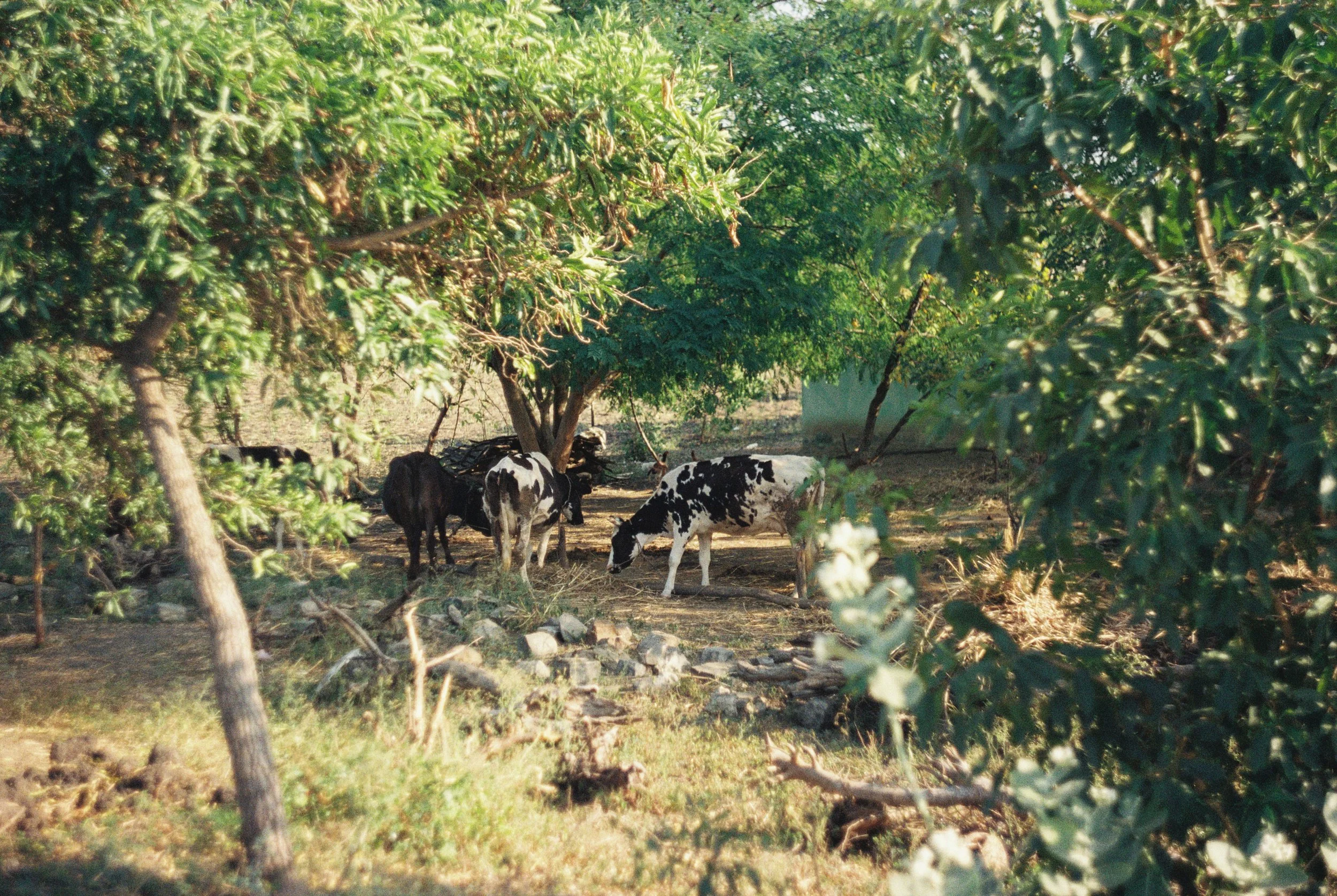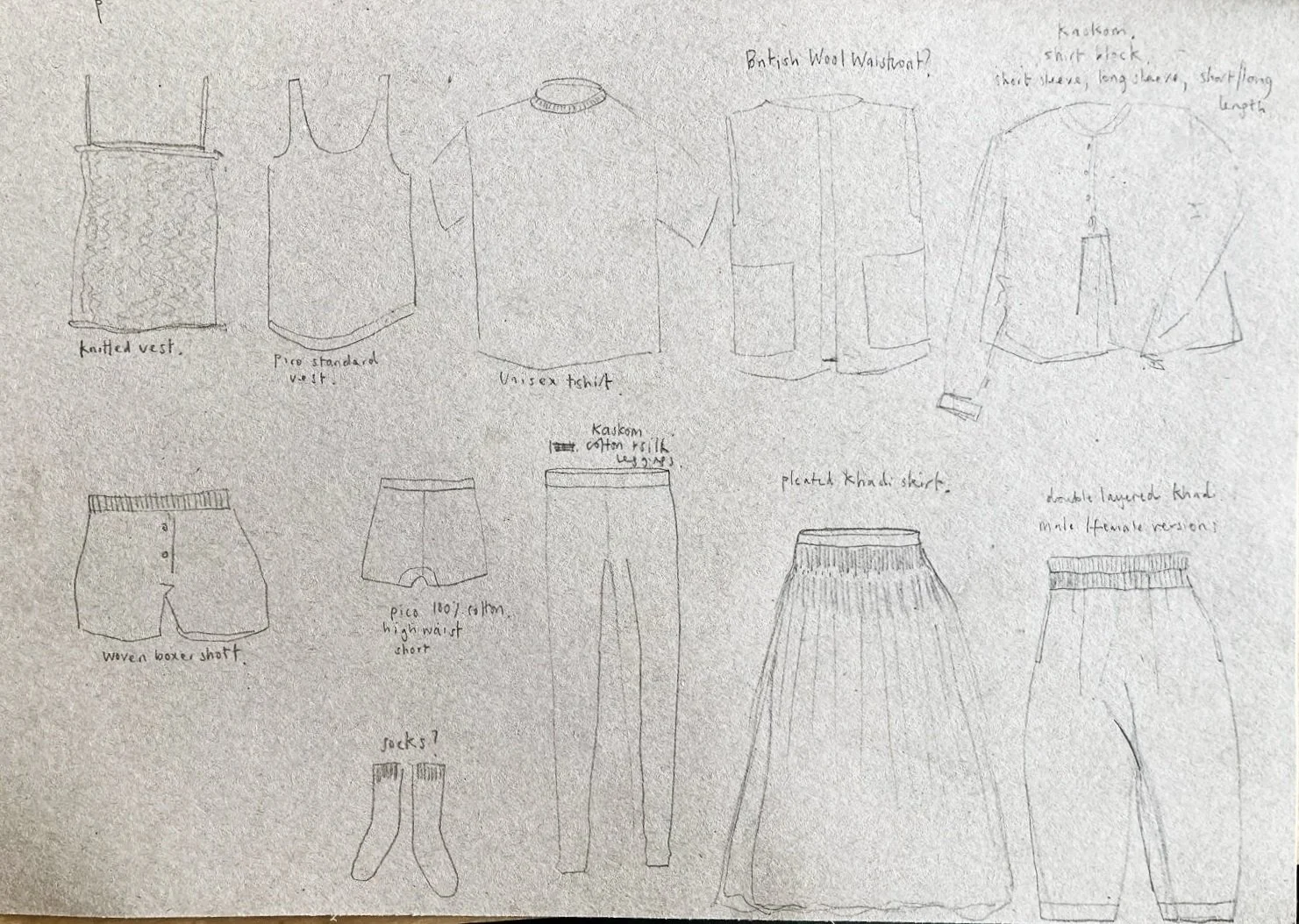What is Desi Cotton?
Desi cotton refers to various native Indian cotton species, each uniquely adapted to its local environment over thousands of years. In contrast to the commercially grown American variety, desi cotton can be entirely rainfed and is naturally pest-resistant, meaning it requires no irrigation or chemical inputs.
Before 1947, desi cotton covered 97% of India’s cotton-growing land. Today, it accounts for less than 3%. As desi cottons were quickly replaced by the highly extractive and chemical dependent American varieties the result was not only ecological imbalance, but the slow erasure of thriving textile cultures and local industries.
Unlike most certified organic cottons desi cotton can also be intercropped with food crops, and its seeds can be saved for the next season, fed to cattle, or hand-processed into a nutritious milk drink, all of which contribute to greater self-sufficiency for farmers.
However, desi cotton presents some challenges. It grows in a less uniform way and has a shorter staple length compared to conventional cotton, making it harder and slower to pick and more difficult to process with industrial machinery.
The shorter staple length also gives the fabric a slightly uneven texture, which we believe adds to its beauty, but currently results in a lower market value compared to the uniformity of conventional cotton.
This is where our research project comes in. Working with Swaminathan of KASKOM, we’ve been exploring ways to blend desi cotton with other fibres including long-staple organic cotton and silk and experimenting with different knit constructions to allow it to be industrially knitted on scale as well as enhance its feel and performance and therefore market potential.
Through thoughtful documentation and garment design, we hope to help elevate desi cotton and celebrate this beautiful, resilient fibre. We want to share its story so that more people can discover it, appreciate its distinctive texture, and feel inspired to wear and value desi cotton fabric for its rich heritage and its real environmental and social benefits.
Desi cotton feels a step further than organic cotton, that doesn’t always fit the realities of smallholder farmers or native ecologies. We are unlikely to ever see desi cotton production return to the scale it was pre 1947 but each small shift feels like an act of cultural and ecological repair.










